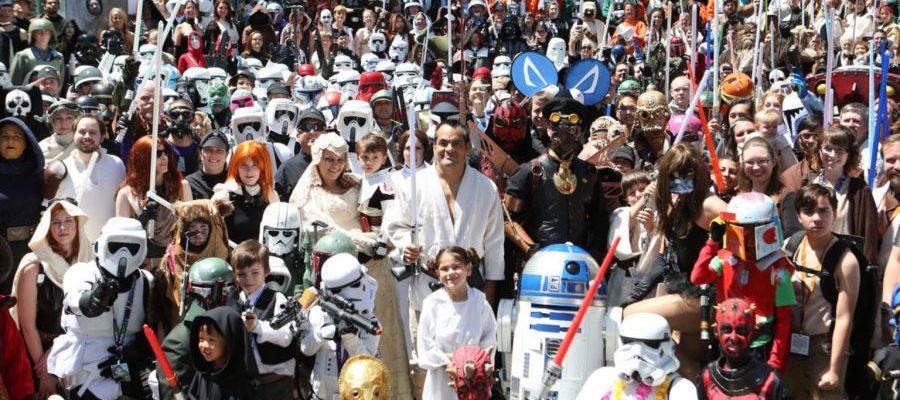‘Star Wars’ Cinematic Universe Isn’t So Far, Far Away

Erin Graham ‘19 / Emertainment Monthly Assistant TV Editor
To celebrate the 40th anniversary of George Lucas’s Star Wars: A New Hope, fans will gather at a convention center in Orlando, Florida in mid-April. The convention will feature guests from every aspect of production, from Mark Hamill to Lucasfilm CEO Kathleen Kennedy to the puppeteer that brings life to the endearing droid BB-8.
The first celebration was in Denver in 1999 to celebrate the release of Phantom Menace and has since traveled to Tokyo, Los Angeles, and London as a result of what the official website calls the “ever-evolving Star Wars universe.”

In fact, between the years of 2015 and 2020, there will be six new films released within the galaxy of Star Wars: three episodes of the latest trilogy, and then three anthology films, beginning with Rogue One’s release last year. With multiple TV shows, hundreds of novels, soon-to-be a dozen films, and one overarching canon in which everyone and everything are intertwined, the Star Wars galaxy is starting to sound a lot like the Marvel Cinematic Universe.

Like the far away galaxy home to everyone’s favorite Jedi, the Star Wars universe is ever-expanding. Characters that have never appeared in the movies are some of the most beloved in the universe, like Ahsoka, Anakin’s padawan that appears in the beloved Clone Wars animated series. Disney has a section of its park dedicated to the franchise and an entire Star Wars Land theme park is slated to open in Anaheim in 2019, which is more than Marvel can say for its heroes. The actors from the original trilogy are quite literally passing batons–lightsabers–on to a new generation.

There are critics across the entire spectrum about how wonderful or detrimental these iterative cinematic universes are to the film industry as a whole. There are fans that were there on opening day in 1977 who are afraid to share their love of the films with kids born in the next millennium as if it will compromise that special love of it that they’ve had for decades. But the expansion of the Star Wars content doesn’t preclude new Hollywood films, and new fans don’t eclipse old ones. The third trilogy installment is the result of a new generation of creators, led by a Kathleen Kennedy, a woman who’s been a beacon of success in the industry for years. The new Star Wars story is led by a fascinating, beloved character that happens to be a girl. It’s difficult to take up an issue with an ever-evolving phenomenon where anyone can be anything.
The galaxy is infinite, after all.